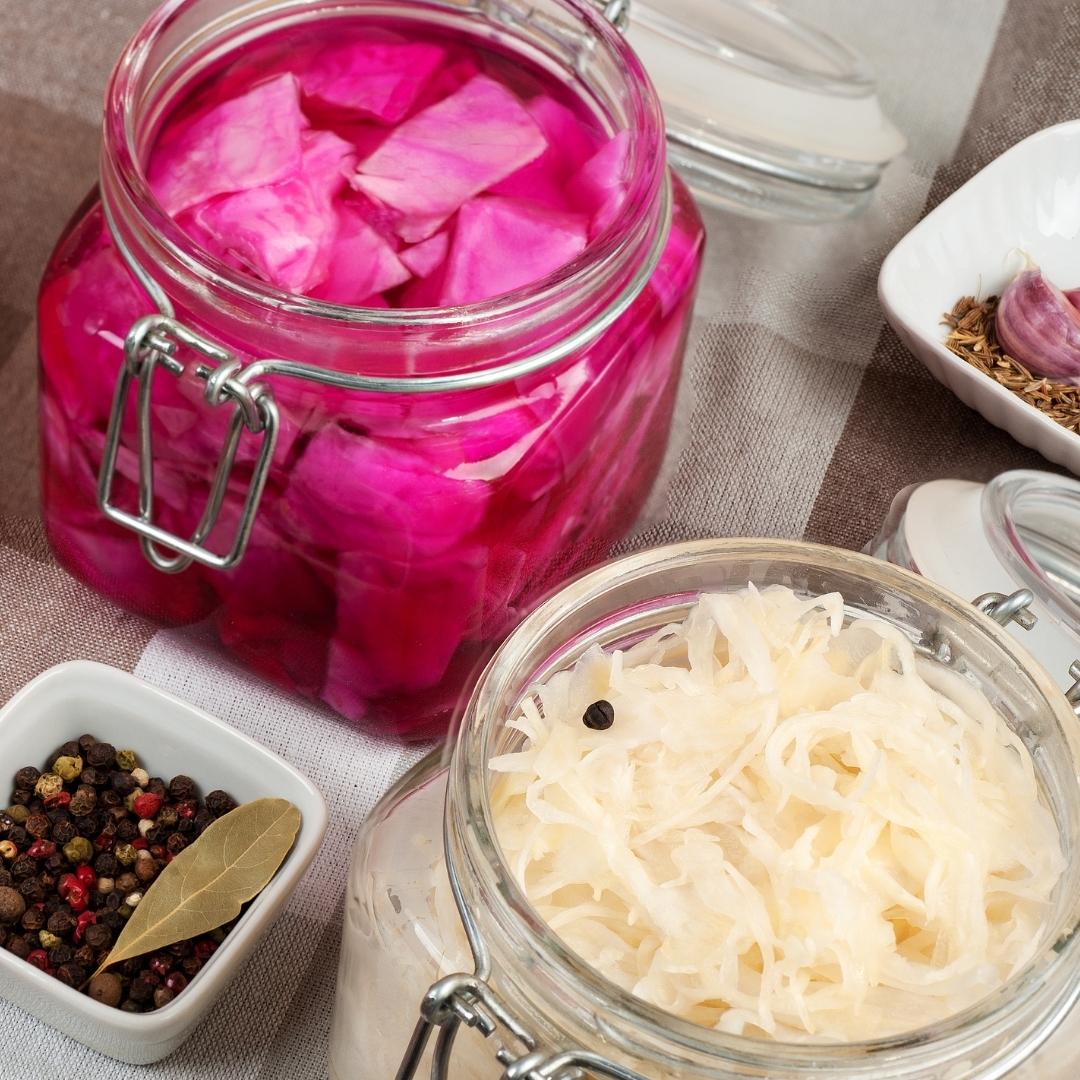
Sauerkraut – Fermented Cabbage
You will need
1 Whole Cabbage Red or White
1 Tbsp Salt Sea or himalayan
1 medium Mason Jar with lid Glass
Instructions
- Remove the outer leaves of the cabbage and save them to place on top of your sauerkraut once its been placed in the jar
- You can either slice the cabbage finely, or place the cabbage in a thermomix or food processor to chop into pieces
- Once chopped or sliced, place in a bowl and add the salt.
- Cover the bowl and leave to rest for around 20 minutes
- Massage the cabbage, squeezing the cabbage in your fists to help release the liquid in the cells of the cabbage. This will produce the brine or liquid needed to cover the vegetables
- Take a handful of cabbage at a time and squeeze out as much liquid as you can and place it in a sterilised mason jar. Use a wooden spoon or rolling pin to push the cabbage down into the jar, making sure there are as few air bubbles as possible.
- Keep doing this until all the cabbage has been pushed down into the jar.
- Use the cabbage leaves you saved to cover the top of the jar and pack it in to keep the cabbage mixture in place
- Pour over the liquid or brine that is left behind and fill to the top. The less oxygen in the top of the jar, the better as this will prevent mould forming
- Place the lid on loosely and do not tighten, as the mixture will ferment and the liquid will need to escape.
- Place a saucer or bowl under the jar to collect any liquid that may overflow while fermentation process takes place.
- Place in a warm, dark place in your kitchen away from the sun so that the cabbage can ferment. If you live in a warm climate such as Singapore, the fermentation process happens quite quickly (within 2 days), whereas a cooler climate like Aus or UK will take longer. Keep checking on your cabbage to see if bubbles have formed and are rising to the top and ensure your cabbage has a sour smell. You can taste it too to check if it has fermented.
- Once it has reached a level of fermentation that seems acceptable to you, place the lid on and store in the fridge. Remove the larger cabbage leaves before serving.
- You can add this fermented cabbage to each meal. Start with a small amount and build up from there. If you react by experiencing diarrhoea or gas or discomfort, cut it back a bit until you feel better and then increase it again. Fermented vegetables have been shown to be more potent than many probiotics.
- To sterilise your mason jar, pour in hot water (from the tap is ok if it becomes very hot), otherwise use hot water from your kettle. Pour the hot water out and allow jar to cool before adding the cabbage.
A recipe by our friend Rene Wright | IG @renewrightnutrition

Leave a Reply